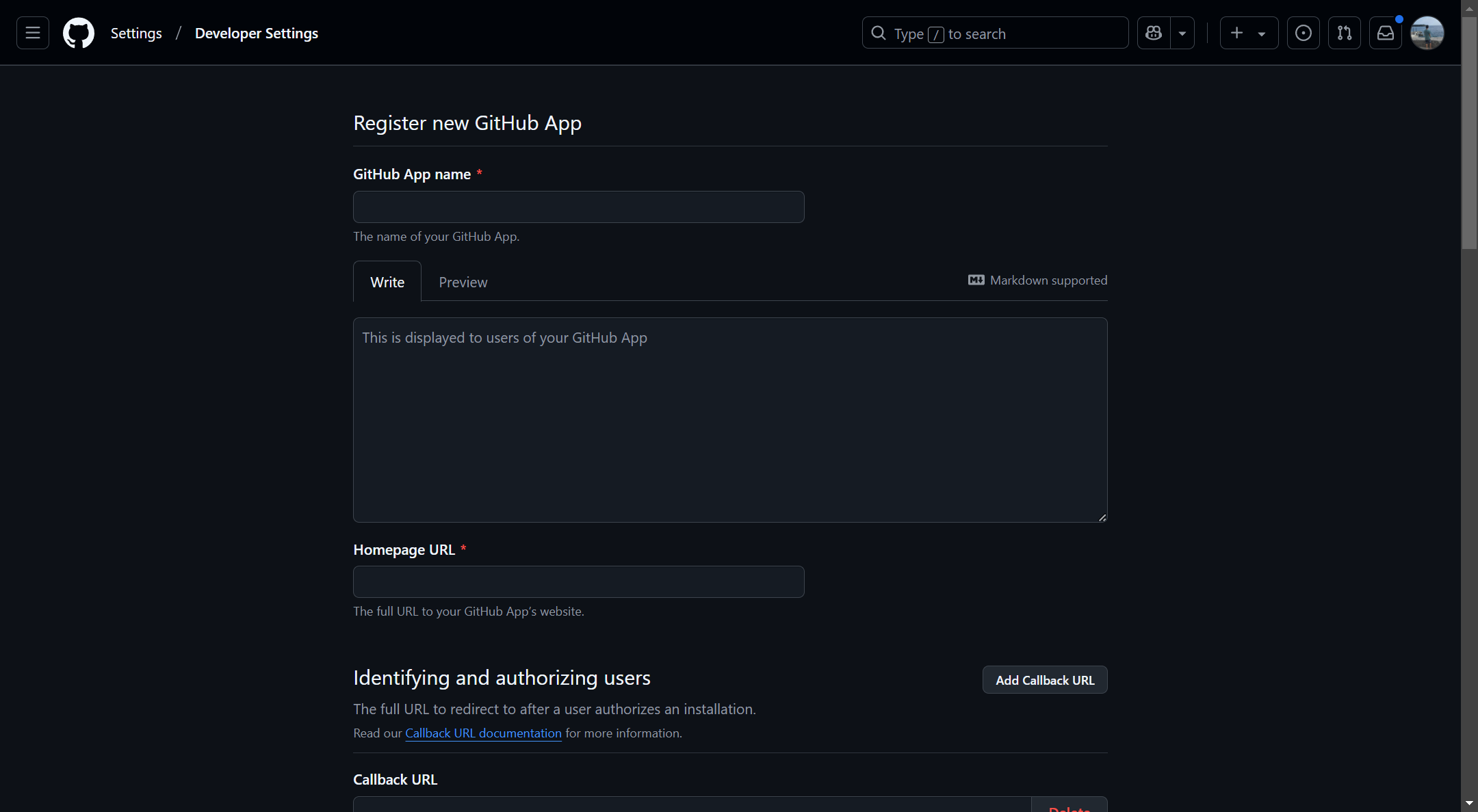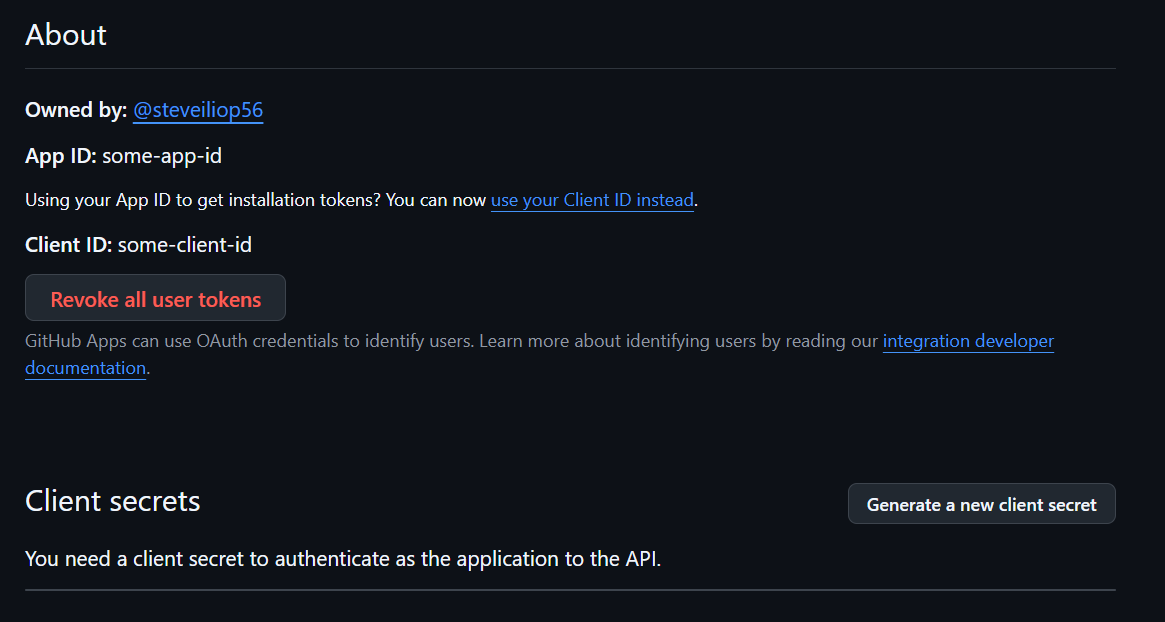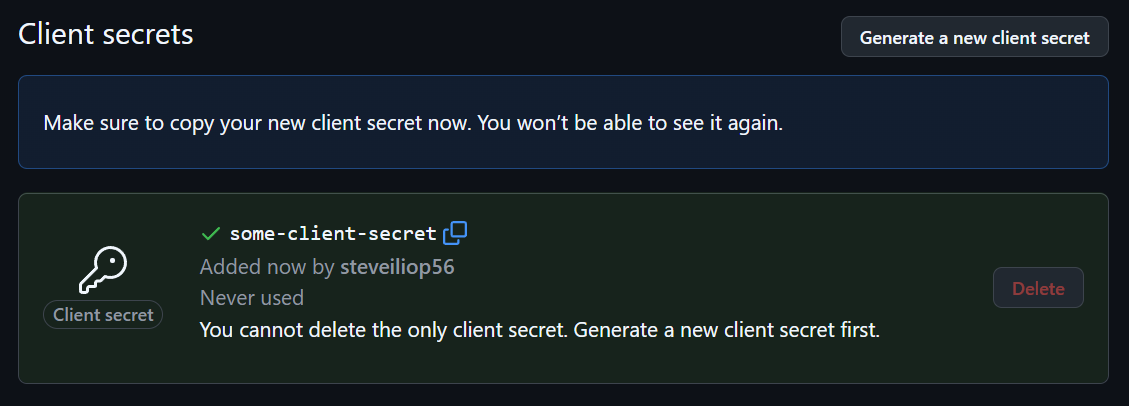Setting up tinyauth with Github Apps
Tinyauth also supports Github Apps for authentication instead of OAuth Apps. Github Apps allow more control over permissions and are a bit more complex to setup. For the time being it is recommended you use the simple OAuth Apps, but in the future Github may deprecate this method of authentication.
Requirements
Github requires the following to setup an app:
- Any domain name (even
.local/.localhost) - A Github account
Create the Github App
Firstly, go to the Github apps section and click New Github App. You should see the following screen:

There you need to fill in the following information:
Github App Name -> The name for your app, it can be anything, e.g. Tinyauth
Homepage URL -> Again can be anything, you can use https://tinyauth.app
Callback URL -> This is the important part. You need to put the tinyauth app URL followed by /api/oauth/callback/github, e.g. https://tinyauth.example.com/api/oauth/callback/github
Under webhook make sure to uncheck the active checkbox as we will not need any webhooks.
Finally under permissions, click account permissions and set the email addresses option to read only.

Then you can create your app and you should be greeted by this screen:

Here, make sure to note down your client ID as you will need it later. You also need a client secret which you can obtain by clicking the Generate new client secret button. You may need to authenticate again but once you do, it will appear like this:

Make sure to also note this down as it will not be available again and you will need it for tinyauth.
Configure Tinyauth
Now that you have your client ID and secret, you can pass it to the tinyauth docker container:
tinyauth:
container_name: tinyauth
image: ghcr.io/steveiliop56/tinyauth:v3
restart: unless-stopped
environment:
- SECRET=some-random-32-chars-string
- APP_URL=https://tinyauth.example.com
- USERS=your-email-password-hash
- GITHUB_CLIENT_ID=your-github-client-id
- GITHUB_CLIENT_SECRET=your-github-secret
labels:
traefik.enable: true
traefik.http.routers.tinyauth.rule: Host(`tinyauth.example.com`)
traefik.http.middlewares.tinyauth.forwardauth.address: http://tinyauth:3000/api/auth/traefikWARNING
OAuth doesn't mean security, with the current setup everybody with a Github account can login to tinyauth as a normal user. If you would like to limit which users can login with OAuth, you can add the OAUTH_WHITELIST environment variable and only allow your email address to login. For more information check the configuration page.
TIP
Since you have OAuth enabled, you can now remove the USERS or USERS_FILE environment variables so as you can ony login with your OAuth provider.
And you are done! After you restart tinyauth and try to login to an app, you should have an additional option to login with Github.
